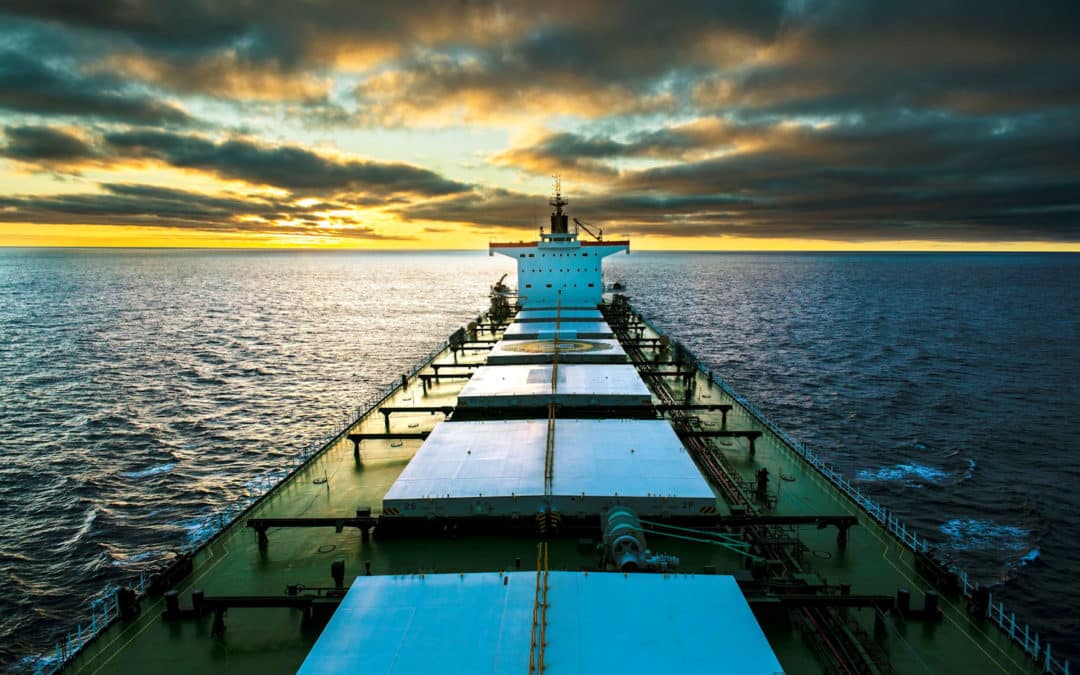Jean-Michel R Gauthier, Managing Director, Global Marine, Protective and Yacht coatings, AkzoNobel takes a look at the COVID-19 trends and outlook for 2021.

The Covid-19 crisis has clearly shaken the world’s social and economic foundations. 2020 has obviously been a challenging year with the after-effects expected to be felt into 2021. That said, I have great faith in the robustness of the marine industry, and I am confident that our sector will emerge from this crisis as an essential driver to the global recovery.
One of the factors delaying a return to normality in the marine industry is the global travel restrictions that are in place and preventing crews and owner representatives from moving around freely to inspect vessels and plan work.
Since the start of the pandemic, we’ve needed to adapt quickly and effectively as a company. Our colleagues across all functions have been deployed to work from home where possible so that we’ve been able to maintain the excellent levels of support that our customers expect. We’ve also managed to safely and successfully keep our factories open throughout the pandemic. Operation in our plants has been adapted to comply with new health and safety requirements, as well as and enabling social distancing and full PPE provisions across sites where social distancing isn’t always possible.
Our Supply Chain and Customer Support teams have worked tirelessly to ensure that our customers’ deliveries could be made on time and in full, with minimal impact. With some country’s boarders closing, unfortunately, in some situations, it has been unavoidable. As the situation continues to evolve, our teams remain very proactive, reviewing logistical constraints in real time and reacting as fast as possible to meet our customers’ requirements.
Advice sought
In these unprecedented times, our customers have been asking us for advice on layup and hull performance and how we can support them to effectively manage vessel performance and fuel efficiency, particularly relating to returning vessels to service as quickly and safely as possible. For example, due to the surplus in oil, tankers have been used as floating storage units, our customers have been looking for best practice solutions for bringing them back to service.
Many containers and cruise operators are looking at various options on how and where is best to layup vessels and whether they should be in hot, warm or cold layup. We’ve been able to support our customers now as we did during the shipping crisis of 2010 where a significant proportion of the global fleet also entered layup. We are using the lessons learned then to help advise our customers now.
To do this, we are utilising our Intertrac big data suite and our extensive in-house biofouling expertise. Specifically, we are using big data to help our customers to identify where the best locations are for owners to layup their vessels based on the fouling challenge at each location. Intertrac is an established tool in the industry, our customers really value the knowledge it offers as it equips their teams with the insights needed to ensure effective management of hull performance. Intertrac uses billions of AIS data points from vessels in service, mapping their location against global fouling challenge zones to provide a unique customer report to help improve future coating choices for the customer. The system can also provide recommendations on where the optimal layup location will be for a vessel at any point in time in conjunction with the current coating that has been applied.
Fouling challenges
The impact of layup will depend upon the fouling challenge within the location of the vessel layup and the current system that is applied to the hull. When selecting fouling control coatings, the fouling control mechanism clearly defines the number of days that the vessel can remain static for, before fouling will start to settle on the hull, and give an indication to whether a level of cleaning will be required in order to return the hull to its optimal state.
Our biocide-free Intersleek scheme offers a range of 45-60 static days depending on the specific fouling conditions. As a foul release technology, the low surface energy of Intersleek means that any fouling which might have adhered whilst static, will then, self-clean once the vessel re-enters service. Conventional biocidal anti-fouling coatings on the other hand will typically require cleaning prior to returning to service, dependent upon the fouling.
Clear differences
There is a clear difference between biocidal and foul release coatings technologies when it comes to static days. Typically, fouling settles faster on hulls coated with biocide-containing coatings than on hulls coated with foul release coatings. As an example, and again depending upon specific fouling conditions of the vessel location, a Self-Polishing Co-polymer (SPC) system such as Intercept 8500 will offer up to 35 static days fouling free, which is better than conventional silyl technologies. However, this is 10 to 25 days shorter than with foul release Intersleek.
Crucially, our hull performance innovations will continue to drive our industry forward, keeping the environment and ocean conservation at the very heart of the International brand. We strongly believe this focused approach is what our customers expect from us to help address their environmental footprint reduction challenge beyond compliance and enable the shipping industry to achieve its 2030 carbon neutral ambition.
If you enjoyed this article, sign up to get DryDock magazine FREE, and why not follow Drydock magazine on LinkedIn

